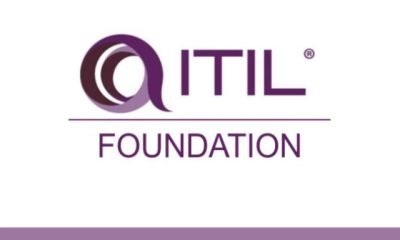Growth
10 Ways to Improve Communication Style


If you can efficiently share information with others, it can help you build and maintain long term relationships in all spheres of life. Effective communication is the key to success. Those who utilize time and energy to deliver their message in a clear and precise manner can quickly build a rapport that can result in increased productivity, output and overall morale.
Let’s dig into different styles of communication to develop robust connections and win the hearts of the people around us.
What Are 5 Communication Styles?
An essential ingredient of accomplishing goals is the way we convey our message to others. A skilful conversationalist does not only focus on the use of language but also considers the inter-subjective relationship, people’s concern and common needs.
Before working on your negotiation skills, you have to understand these 5 styles of communication and their distinct differences to deal with different situations in the best possible way.
Take this communication style quiz to assess your style.
1. The Assertive Style
This style is the reflection of high self-esteem. It is the most viable way to state needs and wants while also respecting the rights of others. Though it carries huge benefits, surprisingly this style is used the least.
Behavioural Characteristics
- Realizing goals without hurting others
- Giving and gaining respect
- Emotionally as well as socially expressive
- Acceptance of possible rejection
Non-Verbal Behavior
- Medium pitch voice
- Relaxed posture & expansive gestures
- Good eye-contact & in control spatial position
Examples:
“I am extremely sorry. I am not available today to assist you because of an urgent piece of work.”
“I am responsible for my mistakes.” Assertiveness permits us to look after ourselves and ensures good mental health and amicable relationships.
2. The Aggressive Style
This style indicates people expressing their sentiments and opinions in such a manner that damages the rights of others. Instead of listening, they issue commands and pose questions. Aggressive communication is always about “me, me and me.”Dominating partners/bosses reflect this communication style in relationships or the workplace.
Behavioural Characteristics
- Loud, threatening, abusive
- Willingness to achieve objectives at the cost of others
- Demanding & intimidating
- Unpredictable
Non-Verbal Behavior
- Loud volume
- Sharp & jerky gestures
- Frown & glare expressions
- Invading others’ privacy
Examples:
“Do it as I said.”
“I am always right.”
The aggressive communicators make other people feel humiliated and hurt.
3. The Passive-Aggressive Style
It is about being indirectly aggressive. The individuals with this type of behaviour often resist demands/requests from family and friends while exhibiting procrastination and stubbornness. They feel powerless and belligerent.
Behavioural Characteristics
- Double-faced
- Indirectly aggressive & sarcastic
- Deceptive & patronizing
- Always Complaining
Non-Verbal Behavior
- Sweet voice
- Asymmetrical posture & quick gestures
- Innocent facial expressions
- Warm & friendly language
Examples:
“I was only kidding. You are better than me in every way.”
“Okay, Whatever.”
People often feel hurt, confuse and resentful around passive-aggressive communicators.
4. The Submissive Style
People with this type of communication style find it hard to share their thoughts. They are incapable of saying “no” and maintain a strategic distance from confrontations at any cost. They are a sort of people pleasers. They often think others have more rights and needs than them.
Behavioural Characteristics
- Apologetic & inexpressive
- Avoid confrontations & taking responsibility for decisions
- Blaming others & rejecting compliments
Non-Verbal Behavior
- The soft pitch of voice
- Try to appear small
- Twisted gestures & no eye contact
Examples:
“Oh! It’s perfectly Ok for me.”
“You can choose anything. I do not want anything more.”
People on the other end may feel exasperated and guilty because of their submission to everything.
5. The Manipulative Style
Manipulative communicators tend to influence and control others. They are shrewd, scheming and calculating. Their words convey an underlying message about which those around may be utterly unaware of.
Behavioural Characteristics
- Sharp
- Dominating others in an insidious way
- making others feel empathetic towards them
Non-Verbal Behaviour
- high pitch volume
- hand dog facial expression
Examples:
“You are fortunate to have expensive accessories. I wish I had money to buy.”
“I was short of time and could not go shopping, so I had worn this dress. I hope I don’t look terrible in it.”
The other person can feel irritated and unsure of what to do with such people.
How to Identify Your Communication Style?
The conversation is a two-way process to gain mutual understanding through verbal, non-verbal and written messages. The way you interact with others matters a lot. Knowing your style will help you develop and improve relationships and promote better understanding.
“The single biggest problem in communication is the illusion that it has taken place.”
—— George Bernard Shaw
Human interactions require deep connections based on efficient communication and exchange of ideas. To feel collectively understood, respected and recognized, identification of communication style and making room for improvising is a must to take step to leave an immediate impression based on verbal and non-verbal behaviours.
“Don’t use words too big for the subject. Don’t say infinitely when you mean very; otherwise you’ll have no word left when you want to talk about something really infinite.”
― C.S. Lewis
Interested in finding out how you communicate with others? This quiz can help you determine your communication style.
10 Ways to Improve Communication Style
Exchanging information is a vital skill that we all need to learn and enhance to attain results. Words hold power. They can make or break you.
Here is your ultimate guide to help you boost your way of interaction by using different communication techniques to overcome interactive barriers naturally.
1. Be Assertive & Enthusiastic
If you are a low speaker, hone talking up and out. Mumbling is a sign of weak confidence. Be clear and self-assured. Keep your chin up and leave a mark of confidence and eloquence on others.
2. Don’t Beat about the Bush
Give a precise and direct answer to the question asked. If you want to take a second before uttering your reply, take your time. Avoid phrases like “sort of” or “I think”. Talk straightforwardly to show your confidence and recognize the value of time.
3. Avoid Using Filler Words
Try not to use words like “um”, “oh”, “like” etc. These are expressions of confusion and reveal your nervousness. To beat a scene of “um” is to practice, practice and more practice. Speak in front of a mirror, record your conversations and keep practising until you get them permanently removed from your life.
4. Make Sure You are Understood
Do not fault others if they do not understand you. Instead of blaming, check why you failed at making them comprehend your message. Look out for ways to rephrase or clarify what you want to share so that it can be understood instantly.
5. Listen Attentively
Listen more and talk less. Let others speak. The best communicator is always the best listener first. Listen without making judgments. Give other people time to express themselves. Afterwards, you can give a keen reply that shows you have taken their thoughts into account.
6. Maintain Eye-contact
Eye contact is a sign of confidence, affirmation and understanding. It builds credibility and exhibits that you care about the people around you. It also shows when someone is being dishonest or deceitful in a situation.
7. Use Conversational Style but Never Interrupt
The best relationships or even interviews are those that follow a conversational pattern instead of an interrogation. Narrate your answers like a story instead of replying in a verbal list style. Do not interrupt when someone else is speaking. Be patient and wait for your turn.
8. Master the Art of Time Management
Timing is a key for impactful conversation. A well-versed communicator knows when to move on to the next topic or to reiterate an idea. Start and end with keynotes.
“Many times in life I’ve regretted the things I’ve said without thinking. But I’ve never regretted the things I said nearly as much as the words I left unspoken.”
—— Lisa Kleypas, Sugar Daddy
9. Ask for Feedback
Asking for fair feedback from peers, elders and team members is basic to becoming a better talker. Through regular feedback, you will be able to discover overlooked areas that need improvement.
10. Mention Names and Reference Specific Facts
It is better to take names instead of using generic conversational pointers like “good to meet you”. Referencing facts and names indicate your focused attention.
Why good communication styles make your life a success?
If you want to get ahead in your life, you have to know the secrets of effective communication.
Let’s explore, how communication skills benefit you in your career, relationships and every sphere of your life.
1. Building Trust
Productive communication cultivates trust with others. Your capacity to tune in mindfully and accept different points of view helps others to trust you as an ideal choice. This will help everyone fulfil their duties with zeal and zest.
2. Preventing and Solving Problems
Intercommunication is necessary to avoid conflicts and resolve occurring issues. The secret tip is always to stay calm, listen to everyone before reaching a conclusion or decision. Devise a way that suits the needs of everyone involved.
3. Engagement Optimization
Strong correspondence increases engagement and boosts productivity among people. They feel more involved in their work and satisfied with what they are doing. This satisfaction guarantees mental as well as physical wellbeing of everyone.
4. Development of better relationships
Excellent communication improves every relationship within personal and professional circles. Listening attentively and giving quality response gives your friends, family members and colleagues a sense of being heard and understood and nourishes mutual respect.
5. Promotes Team Building
With improved conversation, team members will be better able to depend upon each other. They will not feel overburdened and get motivated to give their best which will lead to augmented morale and work experience.
Bottom Line
Transmitting your thoughts clearly and concisely is one of the most important skills to have in every field of life. It helps you to be successful in your relationships and at your workplace by overcoming communication barriers. Keep in mind to use verbal and non-verbal prompts, improve your style, listen attentively and respect your audience.


Growth
How Can You Become Wiser by Understanding the Wisdom in Contradiction?


Meditation is beneficial for both the body and the mind. Many studies have established its role in bringing about various health benefits, including improved memory, mental quickness, boosting the immune system, and reducing cellular inflammation.
Besides its mental and physical benefits, meditating also helps in the process of becoming wiser by empowering you to identify wisdom in contradictions. Life is full of them, and what you generally perceive as the truth may be false.
The best way to gain deeper insights into this topic is by taking online meditation classes consisting of step-by-step instructions from an experienced meditation coach who will help you grasp the contradictions of life and how to overcome them.
But what are some things you can expect to learn from lessons on this topic? Read on to find out.
What Are Contra-Wisdoms?
For example, up might sometimes be down, light could be dark, and good may be harmful in disguise. However, when you understand and embrace these differences, you achieve connection rather than perfection.
Sounds confusing? The way out is to learn the art of seeking connection over perfection since the latter always brings disconnection, leading to a state of mental and physical unrest within yourself.
What Lessons Does a Session Consist Of?
You can learn to seek wisdom in contradiction through eight lessons, each focusing on a different aspect of it.
The lessons are:
- Preparing your consciousness.
- Seeking connection.
- Giving what you receive.
- Perceiving your brain.
- Relationship between suffering and freedom.
- Doing nothing.
- Losing your values.
- Being a lifelong student.
Here is a look at some to give you some idea about what you might expect.
Preparing your consciousness
It focuses on helping you tune in to the state of being and consciousness rather than the things you want to do. It is essential to focus on the consciousness rather than the content.
Your physical presence has the most impact rather than anything else. It’s also about creating an inner shift in which you feel good about yourself rather than wait for someone else to do that for you.
Sitting comfortably, closing your eyes, you would focus on a particular situation. But rather than focusing on what you would do, the emphasis would be on being present in that situation and what experience you would like to have.
Seeking connection through perfection
Through the process of connection emerges perfection. When the focus is solely on excellence, it leads to disconnection. Connecting is about seeing the inherent beauty in things and how it comes from them.
Wanting to be perfect comes from thinking, while connection emerges from a deep sense of oneness and wishing well. When every aspect of your life is influenced by connection, and you connect to a larger purpose, almost every obstacle is surmountable.
A small concentration exercise helps you shift your mindset from trying to perfect things to achieving oneness with them. You put yourself in a space and time (at the home, office, etc.) where you seek the best outcome by tuning in with the people and genuinely trying to establish a relationship with them.
Giving what you receive
It is a good idea to give whatever you seek to receive because that is the best way of receiving it. Loving-kindness, compassion, appreciative joy, and a balanced mind are within you.
What you seek to get from others is already present within yourself. Before you seek anything in the world, you should seek it on the inside. Sitting in a comfortable meditative posture, you focus on giving, sharing, appreciating, and experiencing all that is good and beautiful.
The path to becoming wiser lies in understanding the contradictions of things called contra-wisdoms and developing a oneness with them. However, you can do that after receiving the proper guidance from a qualified spiritual coach.
Growth
7 Reasons Why People Hire Personal Development Coaches and Their Skills


Self-development includes all endeavors that enhance a person’s relationships, well-being, and sense of self-worth. A personal development coach can help people improve their performance and reach their best by utilizing motivating principles and techniques. All essential facets of your life, from your beliefs and connections to your work and skill set, can be covered by a life coach.
Why People Are Hiring Personal Development Coaches
1. To Get Ideal Work-life Balance:
Personal growth coaches can assist clients with career planning, job transitions, and enhancing their professional presentation. They can also help people improve their position by imparting productivity and work management abilities.
2. To Enhance Communication Abilities:
Currently, many individuals often desire to get better at communicating with coworkers, family members, or other leaders in their companies. A self-improvement coach can instruct clients on effective body language, listening techniques, and the best way to put their thoughts into words.
3. To Boost Interpersonal Connections:
A personal development coach can counsel engaging with colleagues, friends, family, and strangers with greater consideration and presence. Clients who have improved interpersonal abilities tend to feel that they become a part of the community and interact more.
4. For Better Health:
Consultants for individual development can support people to abide by an active lifestyle. For example, individuals can seek assistance to have a regular schedule to exercise, get more sleep, and eat well.
5. To Enhance Creativity:
The personal improvement coaches can motivate people to improve their creative skills, or they can assist seasoned artists and creativity experts in coming up with new ideas for their projects.
6. To Improve Parenting:
A few coaches concentrate on assisting parents in raising their kids. They will go through parenting theories, methods of correction, and how parents should delegate tasks to one another.
7. To Identify a Career Purpose:
A few individuals may feel that their current profession does not clearly define their purpose. The self-development coaches assist clients in identifying endeavors or alternative career resources that they would find more exciting and meaningful.
What Are the Vital Skills of Personal Development Trainers?
Leadership Capability
The personal development trainers serve as leaders for several people. Leaders motivate followers to modify their behavior and take on difficulties using their ethical virtue, motivational talents, and effective listening abilities. They set a good example for others by offering the clients their complete attention regularly.
Additionally, they employ effective teaching techniques to present fresh viewpoints and ideas.
Business Aptitudes
Entrepreneurship abilities enable you to maintain organization and deliver a top-notch product necessary to convert a concept into a successful firm.
The coach will build business goals with comprehensive planning, organize funds using appropriate accounting procedures, and offer excellent customer service through effective interpersonal relationships. The instructors also use demonstration and public speaking to greet potential clients and make interesting pitches.
Creativity Abilities
For creating clients’ unique action plans, creative abilities are crucial. Every client faces difficulties that must be resolved creatively using abilities including understanding, problem-solving, and cooperation. The imagination of the self-development trainers may be particularly beneficial to clients who want to accomplish artistic objectives.
Effective Networking Abilities
Being well-known in a neighborhood is quite advantageous for personal development instructors. They maintain contact with existing connections and new acquaintances with professionalism by using networking talents.
Relationship development, considerate communication techniques, and the ability to provide value before requesting financial commitments come under networking abilities.
Bottom Line
A personal development instructor will comprehend the client’s present situation, current self-improvement status, and desired future goals. The trainer will provide them with tactics to follow and hold them accountable after helping them focus on the particular area they wish to improve.
Growth
The Importance of Body Language: How to Understand and Use It


We’ve all heard the saying “actions speak louder than words.” Well, that is especially true when it comes to body language. Body language can communicate a lot about a person – their feelings, their intentions, and more. What is there to talk about when the best cunnilingus techniques are based precisely on body language.
To effectively communicate with others, you need to be able to understand their body language. In this blog post, we will discuss the basics of body language and how you can use it to your advantage!
General Information
Body language is a form of nonverbal communication, consisting of body posture, gestures, facial expressions, and eye movements. Humans send and interpret such signals almost entirely unconsciously. Body language exists in both animals and humans, but this article focuses on interpretations of human body language. It is also known as kinesics.
Most of the emotions we feel are universal, being expressed in the same way across cultures. However, some cultural differences do exist in how emotions are expressed. For example, in Western cultures, direct eye contact is considered a sign of respect and sincerity, while in some Asian cultures it may be considered rude or intimidating. Similarly, while a smile is typically seen as a sign of happiness in Western cultures, in some African cultures it may be interpreted as a sign of mockery or aggression.
Body language is an important aspect of communication, often conveying far more meaning than words alone. It can be used to communicate feelings of happiness, sadness, anger, fear, or interest, among many others. It can also be used to convey messages about status, dominance, or aggression. In some cases, body language may provide information that contradicts what is being communicated verbally (e.g., when someone’s verbal message says one thing but their body language says something else).
Body Language for a Good First Impression
Making a good first impression is important in both personal and professional contexts. Though body language is only one part of the equation, it can be key in making a positive impression.
Here are a few tips:
- Stand up straight: Good posture conveys confidence and shows that you’re engaged and interested.
- Make eye contact: Looking someone in the eye communicates trustworthiness and sincerity.
- Offer a firm handshake: A limp or too-strong handshake can come across as either disinterested or overbearing. Instead, aim for a balanced firmness.
- Smile: A genuine smile communicates happiness and approachability. It’s one of the easiest ways to make someone feel welcome.
Above all, remember that body language is only one piece of the puzzle. Making a good first impression also requires being polite, engaging in conversation, and being yourself. With a little practice, you’ll be impressing everyone you meet in no time!
Body Language for Effective Public Speaking
When you’re giving a presentation, the way you carry yourself can be just as important as the words you’re saying. Your body language can convey confidence, engagement, and authority – or it can make you look nervous, disconnected, and even untrustworthy.
If you want to make sure your nonverbal communication is working for you, there are a few things to keep in mind:
- Remember to make eye contact with your audience. This will help them feel like you’re speaking to them directly, and it will also make you appear more confident and sincere.
- Try to use expansive gestures. This will make you appear more open and approachable.
- Avoid fidgeting or crossing your arms, which can make you look closed off or uncomfortable.
By being aware of these simple tips, you can ensure that your body language is conveying the message you want it to.
Conclusion
Body language is an important tool for understanding and interacting with other people. It can be used to improve communication, build rapport, and enhance relationships. It can also be used to detect deception, as people’s nonverbal cues often betray their true feelings or intentions.



 Health11 months ago
Health11 months ago6 Best Ways to Get Quality Sleep



 Social Media12 months ago
Social Media12 months agoLinda Yaccarino: Twitter’s New CEO from NBCUniversal



 Work11 months ago
Work11 months agoFive Things Employees Look for in a Job Role



 shopping12 months ago
shopping12 months agoEssential Tips for Buying Jewelry Online



 Tech12 months ago
Tech12 months agoWhat Are the Advantages of ITIL Foundation Certification for Organizations?



 Education9 months ago
Education9 months ago7 Tips for Writing Short Stories That Captivate and Resonate



 Entertainment11 months ago
Entertainment11 months ago5 Famous Gamblers and Their Most Memorable Quotes



 Business11 months ago
Business11 months agoHow to Design and Create a Poster from Scratch




















